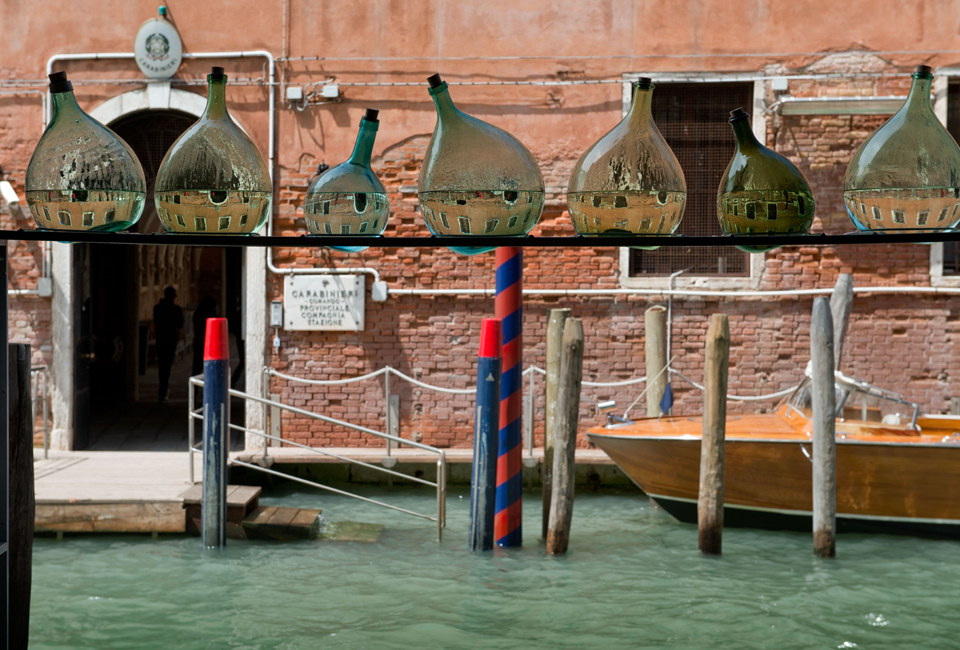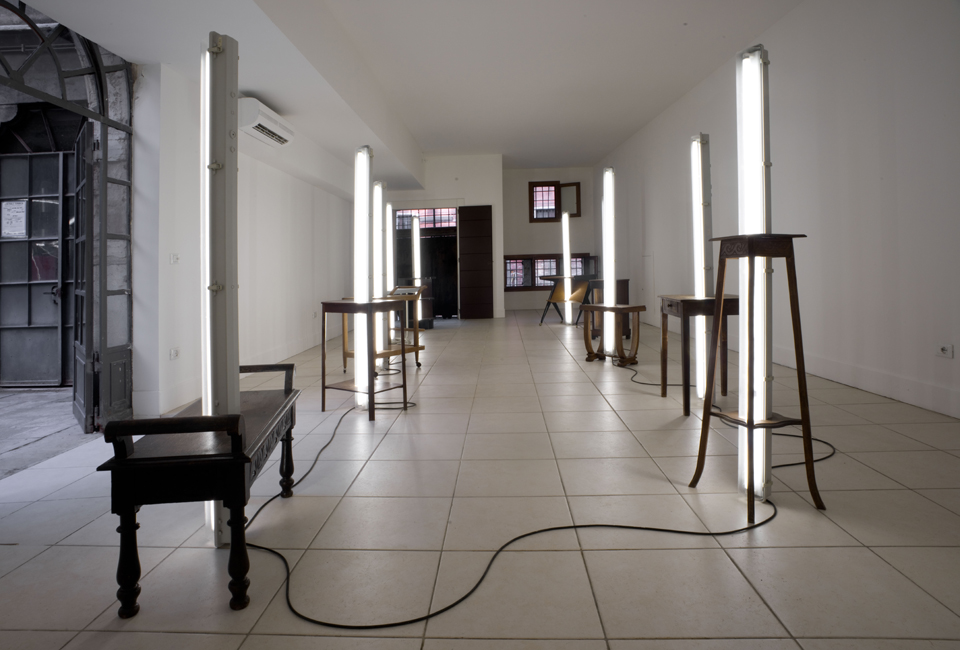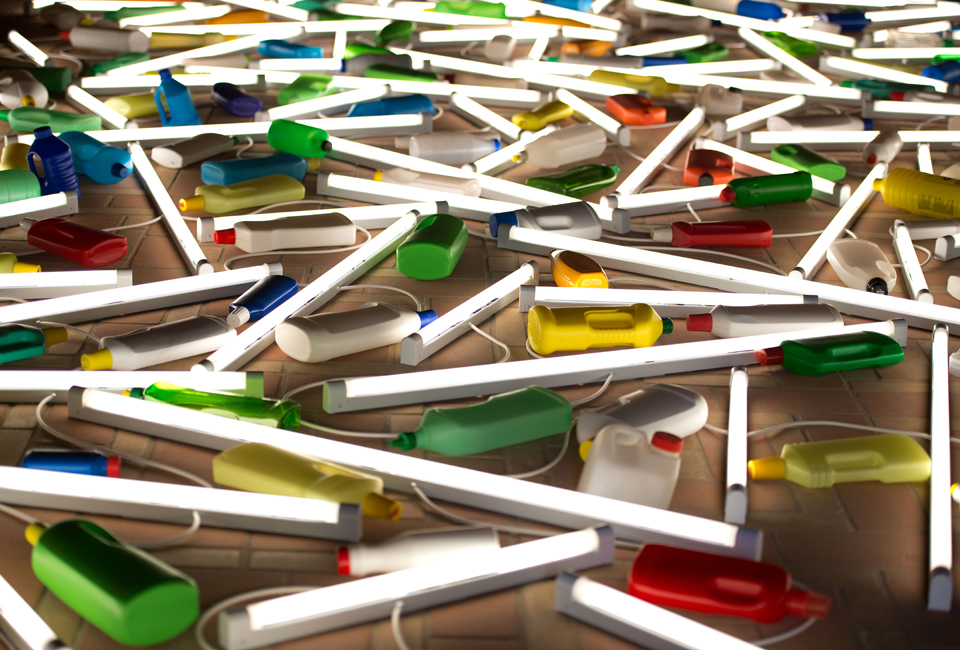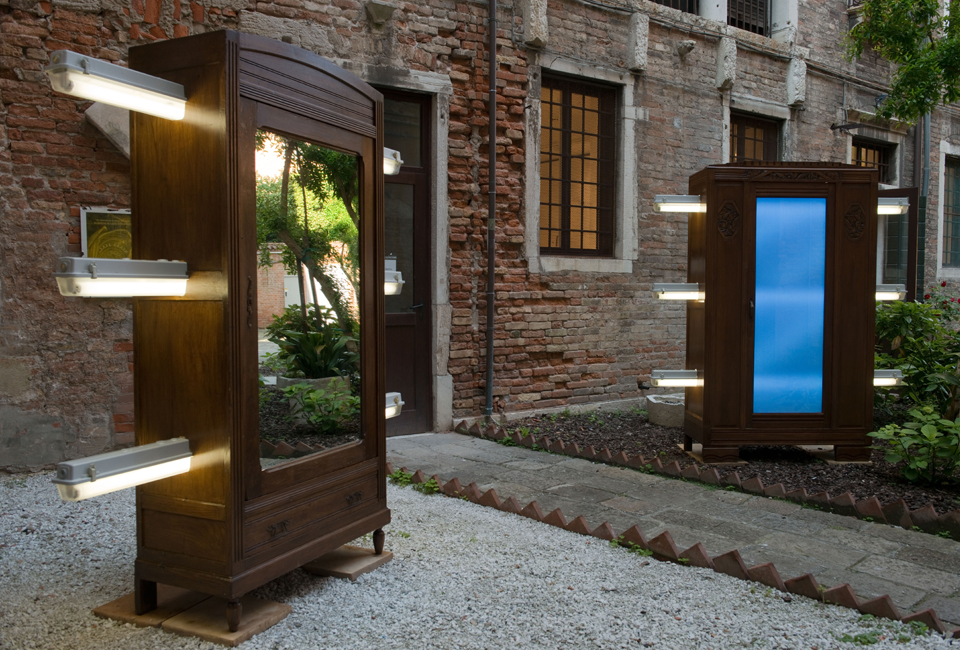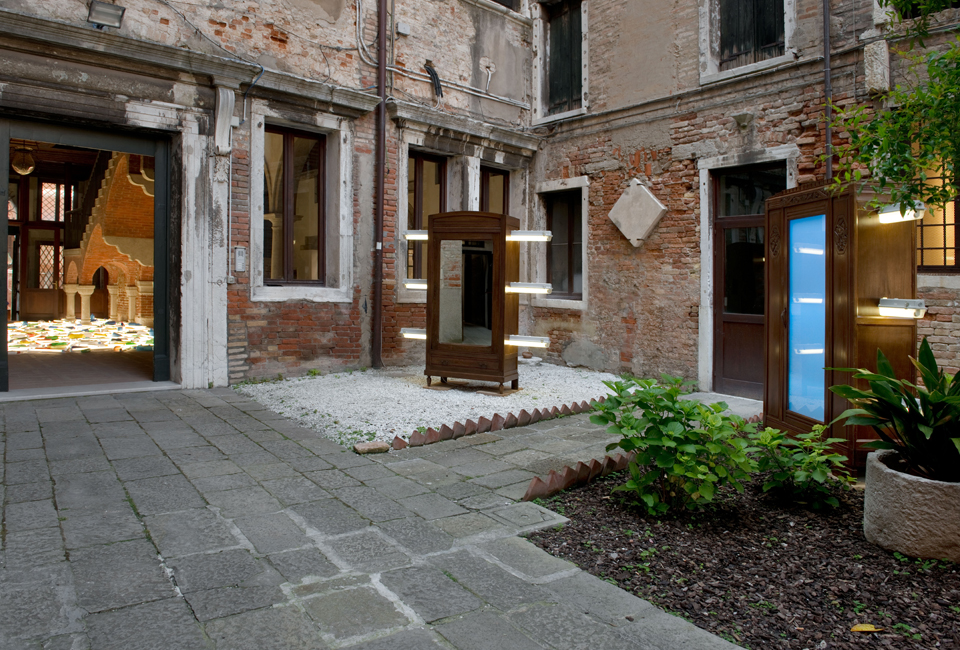Bill Culbert, New Zealand’s most renowned artist, is well known for making art from light. He is also renowned for lightness of touch – a talent for putting familiar objects together in ways that activate both them and their surroundings. And in 2013, at the 55th Venice Biennale, Culbert’s art light up some remarkable spaces within the Istituto Santa Maria della Pietà, right by the lagoon on Venice’s busy Riva degli Schiavoni. Walking inward through the corridors, courtyards and rooms of the building, visitors encountered a series of playful, immersive and contemplative sculptural experiences.
Like many of his installations, Culbert’s latest show, Front Door Out Back, is anchored firmly in the domestic world, with common objects such as tables, chairs, wardrobes and plastic containers featuring prominently in many works. But these objects have been altered and energised, lifted out of the ordinary, by Culbert’s signature medium – light. Fluorescent light tubes in abundance that draw viewers through the spaces, flowing around, over and often right through Culbert’s pieces of furniture and coloured plastic vessels – objects that Culbert refers to as both "stoppages and transporters". The most ambitious of these works-in-planning is a 20-metre-long overhead light sculpture, which will send gleaming steel chairs and tables tumbling through space in a torrent of fluorescent tubes.
As they unfold through the building, these light sculptures play with and play off the unique qualities of the Pietà site – in particular the constant sense of connection between ground level and water level. They also converse – and sometimes quietly argue – with the associations of historic and tourist Venice. Perhaps those recycled plastic vessels are Culbert’s retort to the cult of Murano glass. And perhaps those fluorescent tubes are his pointedly workaday response to all the heavenly beams of light in historic Venetian painting. In Culbert’s words his aim is to introduce "an energy and simplicity" in this setting, turning rooms and passages that are usually uninhabited into vibrant living space.
















